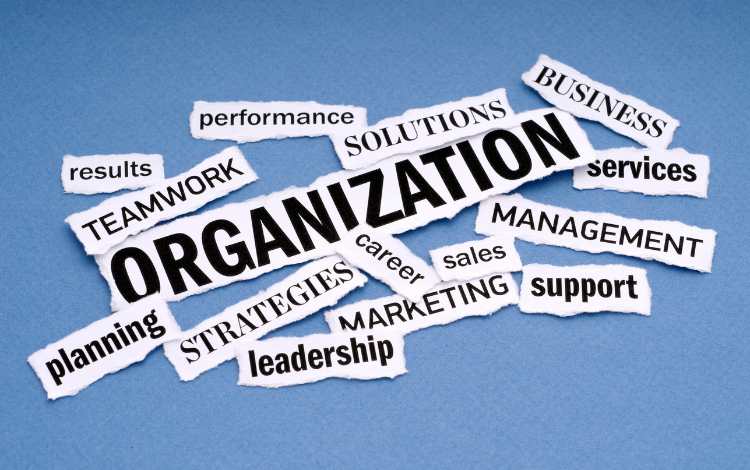
Success in the world of business is not just about having a great product or a brilliant marketing strategy. While these factors certainly play a significant role, there is another essential component that often goes unnoticed but is crucial to achieving and sustaining success: a solid organizational structure.
The way your business is organized and structured internally can have a profound impact on its overall success.
In this article, we will delve into ten compelling reasons why having a solid organizational structure is crucial to running a successful business.
1. Clarity of Roles and Responsibilities
Browse our online courses on meditation, positive thinking, overcoming procrastination, confidence, and freedom from distractions.
A well-structured organizational framework provides clarity about roles and responsibilities within the company. It defines who is responsible for what, creating a clear delineation of duties and accountabilities.
When every team member knows their specific role and to whom they report, it reduces ambiguity, minimizes overlaps, and enhances overall productivity.
Without a solid organizational structure, confusion can arise, leading to inefficiencies and misunderstandings.
Employees may find it challenging to determine their areas of responsibility, potentially resulting in a lack of ownership and accountability. On the contrary, a clear and well-defined structure fosters a sense of purpose and accountability among employees, driving them to perform their roles more effectively.
2. Streamlined Decision-Making
Effective decision-making is a cornerstone of business success. A structured organization created with an organizational chart tool streamlines the decision-making process by clearly defining hierarchies and reporting lines.
It becomes evident who holds the authority to make specific decisions, ensuring that the right people are involved in critical choices.
In contrast, organizations with ambiguous or convoluted structures may encounter bottlenecks in the decision-making process. This can lead to delays, missed opportunities, and frustration among employees.
A solid organizational structure accelerates decision-making, especially in today’s fast-paced business environment, where rapid responses can be crucial to seizing opportunities or addressing challenges effectively.
3. More Effective Communication
Effective communication is the lifeblood of any organization. A solid organizational structure establishes channels and protocols for communication. Team members know where to go for information, approvals, or support.
This streamlined communication ensures that information flows smoothly, reducing the chances of misunderstandings and miscommunications.
4. Enhancing Accountability
Accountability is vital for achieving goals and maintaining high standards. A well-structured organization fosters a culture of accountability by holding individuals and teams responsible for their performance.
When roles and responsibilities are clearly defined, it’s easier to determine who is responsible for specific outcomes.
In contrast, organizations with vague or overlapping roles may struggle to establish clear lines of accountability. This can result in finger-pointing, a lack of ownership, and a decline in overall performance.
In a structured organization, employees understand their responsibilities and are more likely to take ownership of their tasks, driving higher levels of commitment and performance.
5. Efficient Resource Allocation
A well-structured organizational framework enables efficient resource allocation and optimization. It allows businesses to allocate their resources – both human and financial – strategically and effectively.
Without a solid structure in place, resource allocation may become haphazard and inefficient, leading to wasted time, effort, and money.
In a well-organized business, it’s easier to identify areas that require additional support, investment, or reallocation of resources. This ensures that resources are utilized in a way that aligns with the company’s goals and objectives.
Efficient resource allocation can lead to cost savings, improved productivity, and a more competitive edge in the market.
6. Adaptability to Change
The business landscape is constantly evolving. An agile organizational structure enables your business to adapt to changes quickly.
Whether it’s a shift in market conditions or the need to pivot your business strategy, a well-structured organization can respond with agility and minimize disruption.
7. Scalability
As your business grows, a solid organizational structure provides the flexibility to scale operations efficiently. New roles and departments can be integrated seamlessly into the existing structure.
This scalability ensures that your business can handle growth without experiencing chaos or decreased efficiency.
8. Attracting and Retaining Talent
Top talent is attracted to organizations with clear organizational structures. Talented individuals seek clarity in their roles and opportunities for growth.
A well-organized company can articulate career paths and provide a structured environment, making it more appealing to potential hires.
Additionally, employees are more likely to stay when they understand their roles and see potential for advancement.
9. Consistency in Company Culture
A solid organizational structure fosters consistency in company culture. When roles, expectations, and reporting lines are well-defined, it’s easier to ensure that everyone aligns with the organization’s values and objectives.
Consistency in culture contributes to a more cohesive and motivated workforce.
10. Competitive Advantage
A well-organized company often has a competitive advantage. It can respond more quickly to market changes, make informed decisions, and optimize its resources. This competitive edge can be a significant factor in long-term success and market positioning.
While innovation, strategy, and product quality are undeniably important factors in achieving business success, the role of a solid organizational structure should not be underestimated.
It is the foundation upon which these other elements can thrive. From improving communication and decision-making to enhancing accountability and attracting top talent, the benefits of a structured organization are numerous.
Having a solid organizational structure is not a luxury; it’s a necessity. It sets the stage for growth, innovation, and long-term sustainability. Therefore, investing time and effort in establishing and maintaining a robust organizational structure is a strategic decision that can pay dividends for your business.
In summary, a successful business is built on a solid foundation, and a well-structured organization forms the cornerstone of that foundation.
By recognizing the importance of organizational structure and nurturing it as an essential aspect of your business, you can position yourself for sustained success and growth in today’s competitive business environment.

